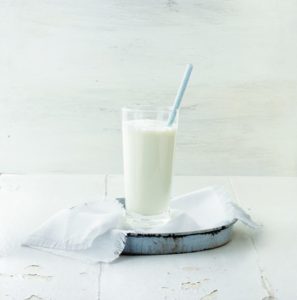VITAMIN D IN SUMMER: SUN, FOOD, SUPPLEMENT
Vitamin D is an essential nutrient for proper growth and formation of teeth and bones. We need vitamin D for the absorption of calcium and phosphorus from the foods that we eat. Vitamin D has some other roles in the body, and it is important for our muscles and our immune system. Low levels of vitamin D, known as vitamin D deficiency, has been linked to a wide variety of health issues such as osteoporosis, heart disease, depression, cancer, and multiple sclerosis.
How much Vitamin D do I need?
Osteoporosis Canada recommends healthy adults between 19-50 years of age, including pregnant or breast feeding women, require 400 – 1,000 IU daily. Those over 50 or those younger adults at high risk (with osteoporosis, multiple fractures, or conditions affecting vitamin D absorption) should receive 800 – 2,000 IU daily.
What are the sources of Vitamin D?
Food and Supplements
There are very few foods in the nature that contain significant amounts of vitamin D. These include the flesh of oily fish such as salmon, tuna, sardines, and mackerel and fish liver oils. We can also get small amounts of vitamin D from foods such as beef liver and egg yolks. Some yogurts contain vitamin D if they are made with vitamin D fortified milk. In Canada, vitamin D fortification is mandated for margarine, infant formula, formulated liquid diets, cow’s milk and its substitutes, egg products, foods for use on a very low energy diet, meal replacements and nutritional supplements. Fortification is voluntary for butter substitutes, condensed milk, goat’s milk and goat’s milk powder.
It is nearly impossible to get enough vitamin D from your diet. You would need to eat a lot of these foods to reach the recommended level. Osteoporosis Canada recommends that all Canadian adults take a vitamin D supplement (specifically, vitamin D3 or cholecalciferol) year-round. This is the most common type of vitamin D found in supplements in Canada.
Examples of foods rich in vitamin D
| Food | Serving Size | IU’s per Serving |
| Cod Liver Oil | 5 mL/1 tsp | 426 |
| Egg Yolk, cooked | 2 Large | 64 |
| Margarine, fortified | 5 mL/1 tsp | 25-36 |
| Milk (all types) | 1 c/250 mL | 103-105 |
| Mushrooms, white | 125 mL/ 1/2 c | 4 |
| Orange Juice, Fortified | 1/2 c/125 mL | 50 |
| Salmon (Sockeye), Baked or Broiled | 75 g | 394 |
| Salmon, pink, Canned, Drained with solids and bones | 75 g | 435 |
| Snapper, Baked or Broiled | 75 g | 392 |
| Soy Beverage, Enriched | 1 c/250 mL | 86 |
Sun exposure
 Vitamin D, the “sunshine vitamin,” is produced when the sun’s rays interact with our skin. It helps build stronger bones by increasing the absorption of calcium. It also improves the function of muscles, which can improve your balance and decrease the likelihood of falling and suffering a fracture.
Vitamin D, the “sunshine vitamin,” is produced when the sun’s rays interact with our skin. It helps build stronger bones by increasing the absorption of calcium. It also improves the function of muscles, which can improve your balance and decrease the likelihood of falling and suffering a fracture.
Canadians, particularly women, have reduced their sun exposure and use sunscreen (which blocks UV rays) to prevent damage from the sun. As well, Because of our latitude, we cannot produce vitamin D between October and March.
Furthermore, the skin’s ability to make vitamin D decreases as we age.
All this supports the need to get vitamin D through food and/or supplementation.
WRITTEN BY
Hassan Vatanparast is a member of Osteoporosis Canada’s Scientific Advisory Council. He is a Professor with Joint Appointment to the College of Pharmacy and Nutrition and School of Public Health, University of Saskatchewan. He is actively involved in research and health promotion initiatives targeting bone health. Hassan is leading several projects at the local, national, and global levels aimed to improve the nutritional health of the general population, newcomers and indigenous communities.
References:
National Institutes of Health. (2018). Vitamin D, Fact Sheet for Health Professionals. Retrieved from https://ods.od.nih.gov/factsheets/VitaminD-HealthProfessional/#en26 (assessed May 28, 2019)
Institute of Medicine. (2011). Dietary reference intakes for calcium and vitamin D: Washington, DC: The National Academy Press.
Janz, T., & Pearson, C. (2013). Vitamin D blood levels of Canadians: Statistics Canada Ottawa (Canada).
Libon, F., Courtois, J., Le Goff, C., Lukas, P., Fabregat-Cabello, N., Seidel, L., . . . Nikkels, A. F. (2017). Sunscreens block cutaneous vitamin D production with only a minimal effect on circulating 25-hydroxyvitamin D. Arch Osteoporos, 12(1), 66. doi:10.1007/s11657-017-0361-0
Wacker, M., & Holick, M. F. (2013). Sunlight and Vitamin D: A global perspective for health. Dermato-endocrinology, 5(1), 51-108.
Whiting, S. J., Langlois, K. A., Vatanparast, H., & Greene-Finestone, L. S. (2011). The vitamin D status of Canadians relative to the 2011 Dietary Reference Intakes: an examination in children and adults with and without supplement use. Am J Clin Nutr, 94(1), 128-135.
Canadian Food Inspection Agency. (2018). Foods to Which Vitamins, Mineral Nutrients and Amino Acids May or Must be Added. Retrieved from http://www.inspection.gc.ca/food/requirements/labelling/industry/nutrient-content/reference-information/eng/1389908857542/1389908896254?chap=1 (assessed May 31, 2019)
Pinault, L., & Fioletov V. Sun exposure, sun protection and sunburn among Canadian adults. Health Reports. Statistics Canada. Health ReportsCatalogue no. 82-003-X. ISSN 1209-1367.
Did you know?
A Registered Dietitian or your doctor can help you regarding supplementing vitamin D in your daily diet.


 Written By
Written By

 Many people wonder if they may be lactose intolerant, but unfortunately there’s a lot of misinformation out there, which leads to lots of confusion! Most importantly, having a lactose intolerance does not mean that you must give up your favourite dairy-based foods. In fact, I am lactose intolerant and still enjoy cheese on my pizza, Greek yogurt in smoothies and cream in my coffee! So, here are the facts, straight from this lactose intolerant dietitian:
Many people wonder if they may be lactose intolerant, but unfortunately there’s a lot of misinformation out there, which leads to lots of confusion! Most importantly, having a lactose intolerance does not mean that you must give up your favourite dairy-based foods. In fact, I am lactose intolerant and still enjoy cheese on my pizza, Greek yogurt in smoothies and cream in my coffee! So, here are the facts, straight from this lactose intolerant dietitian: Written By
Written By